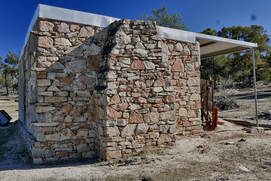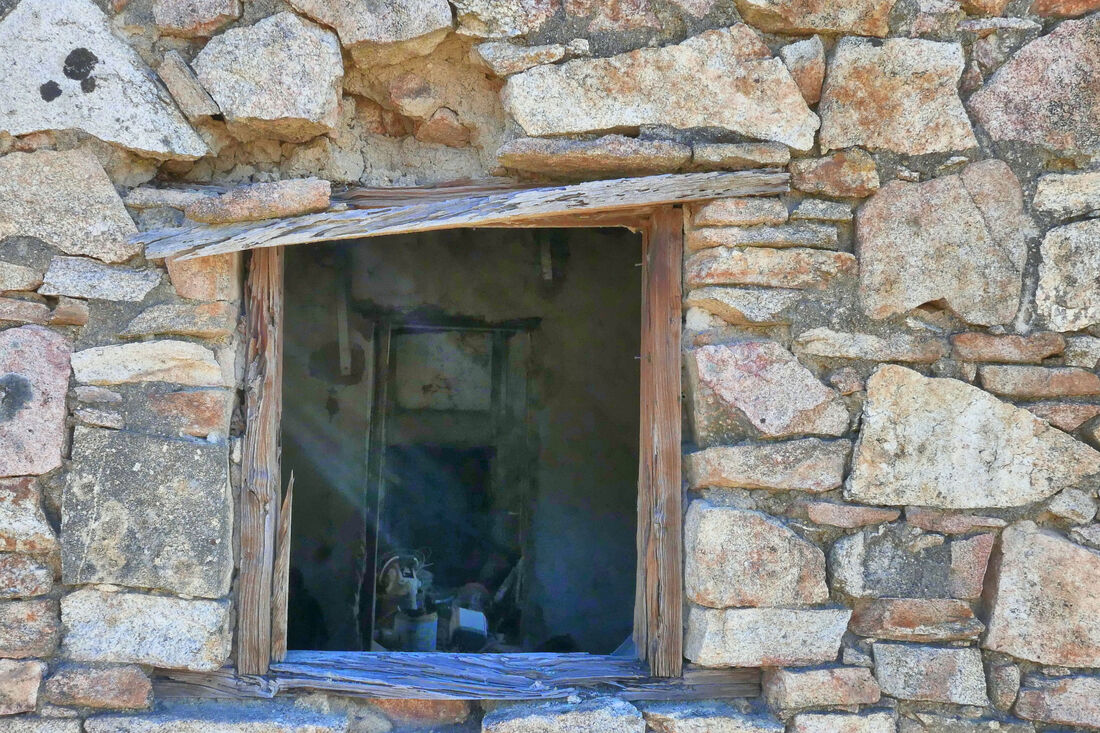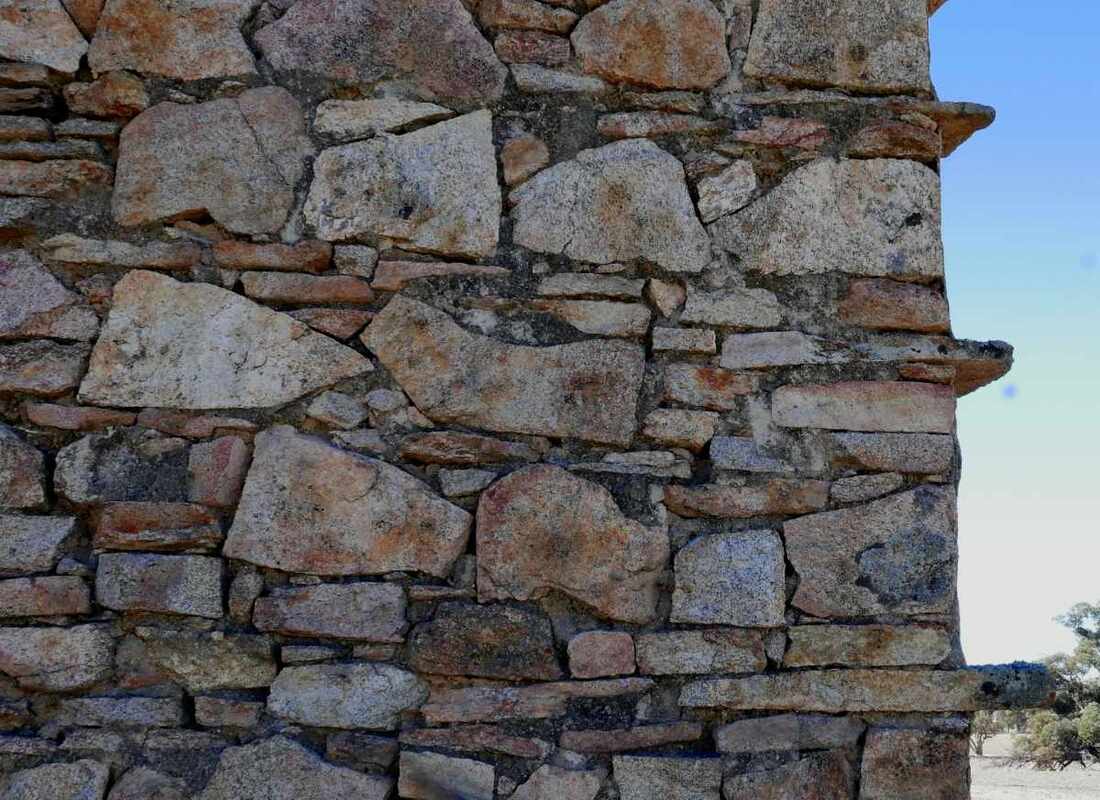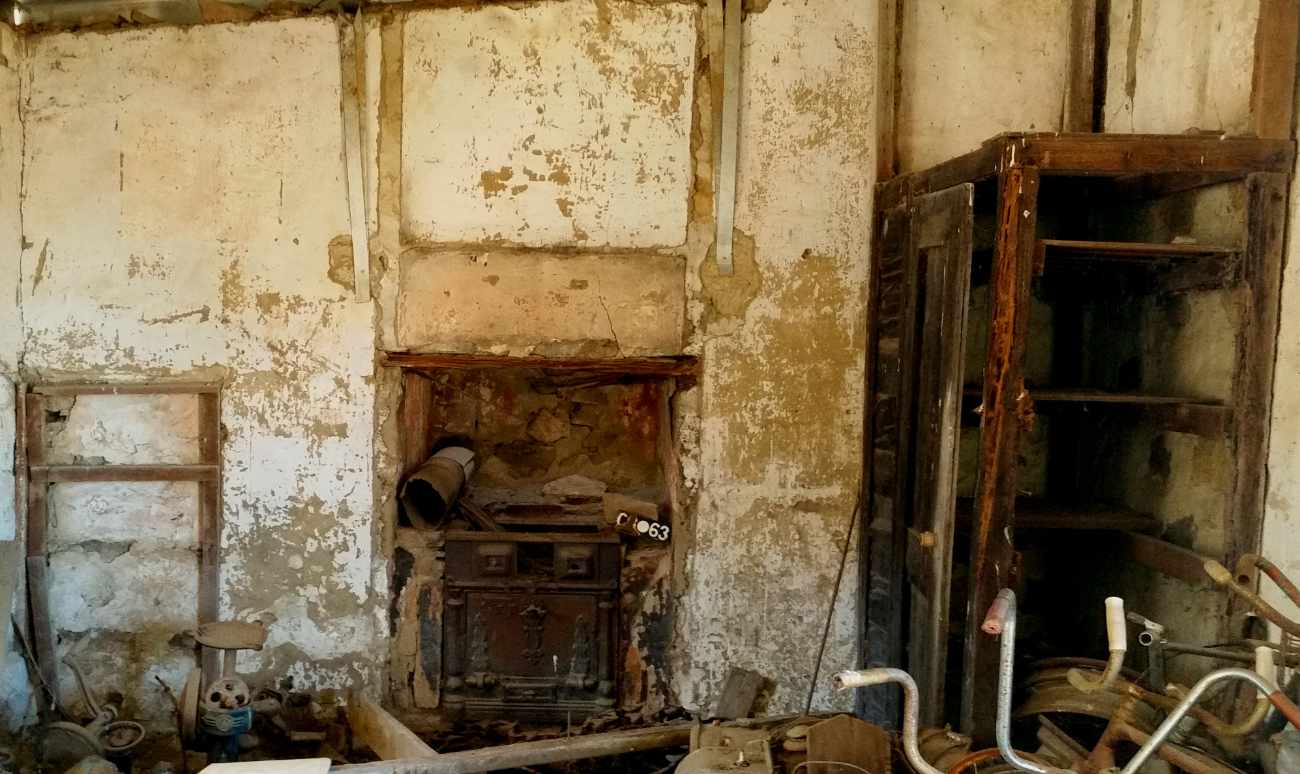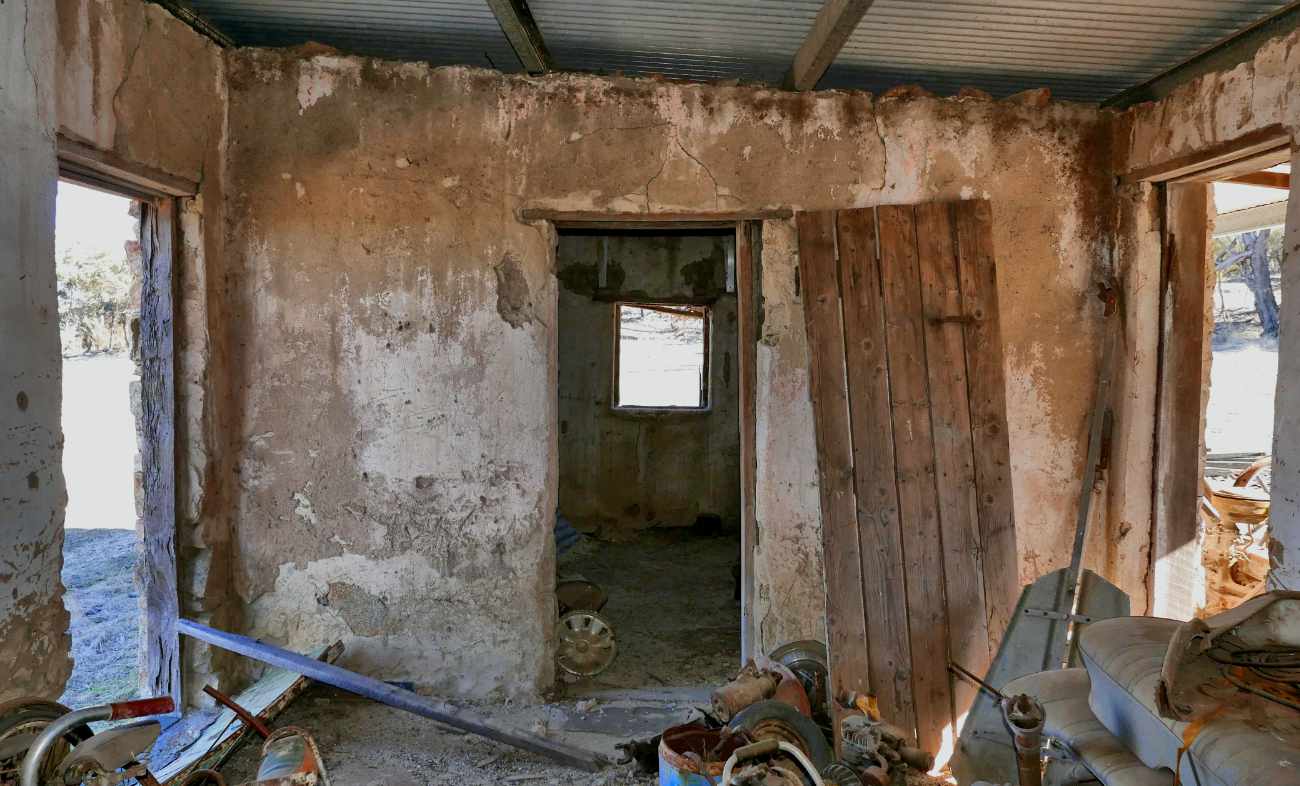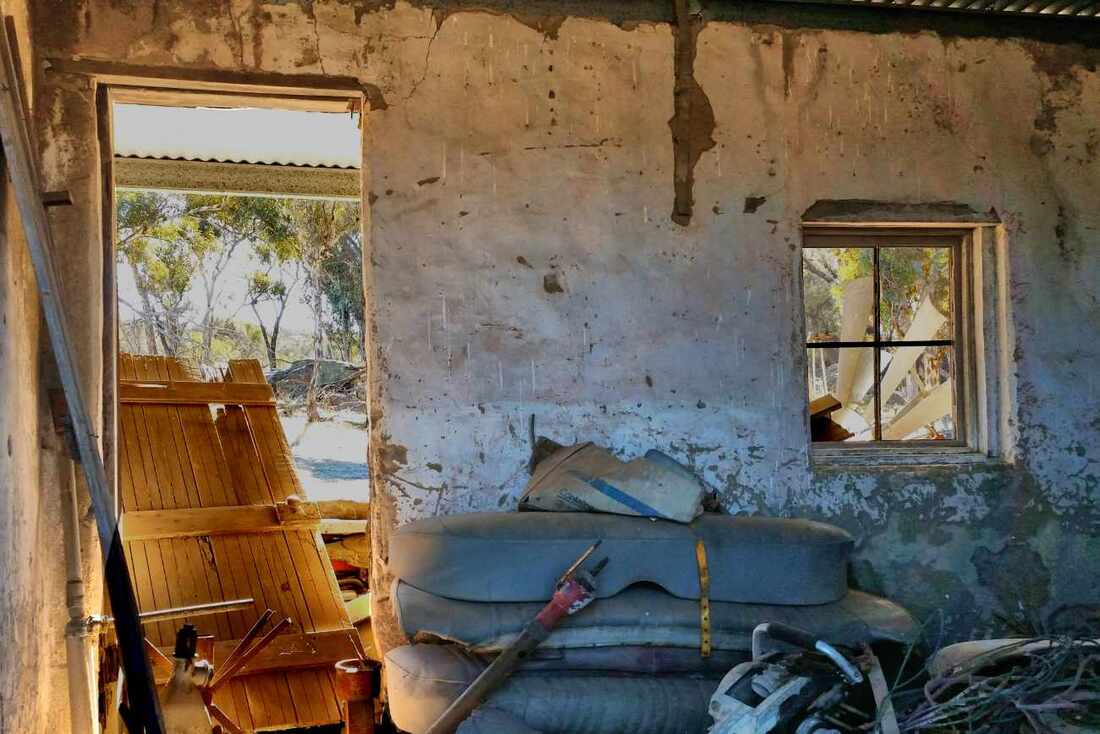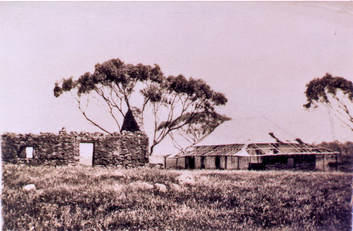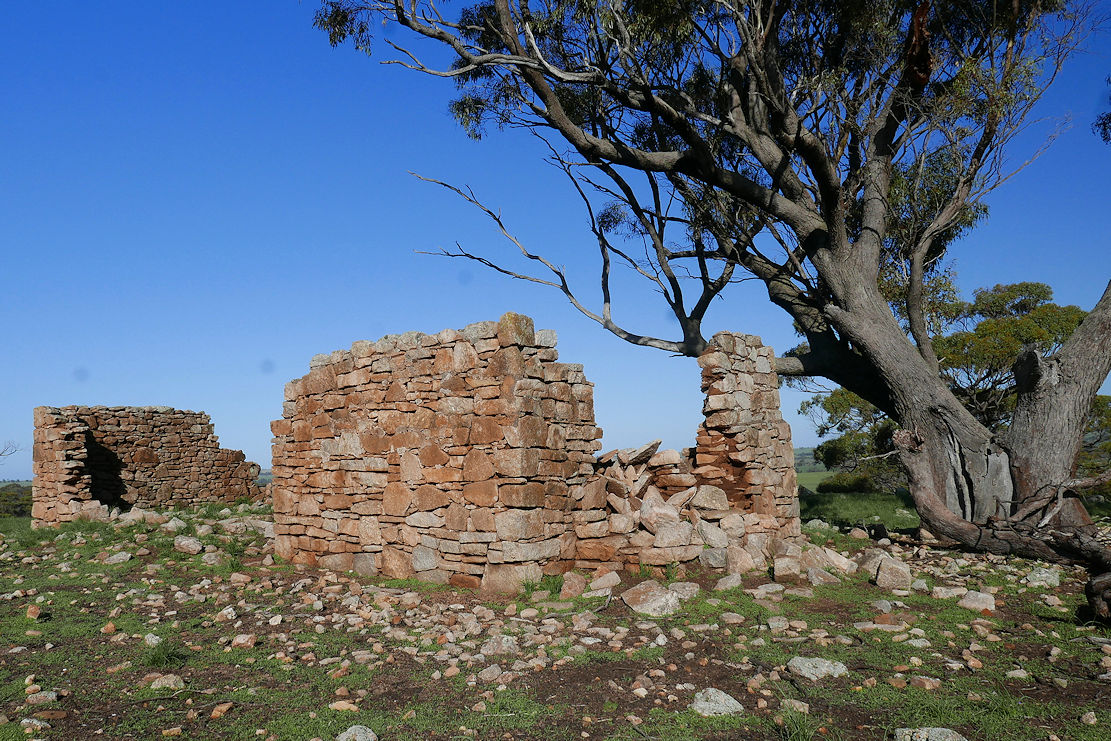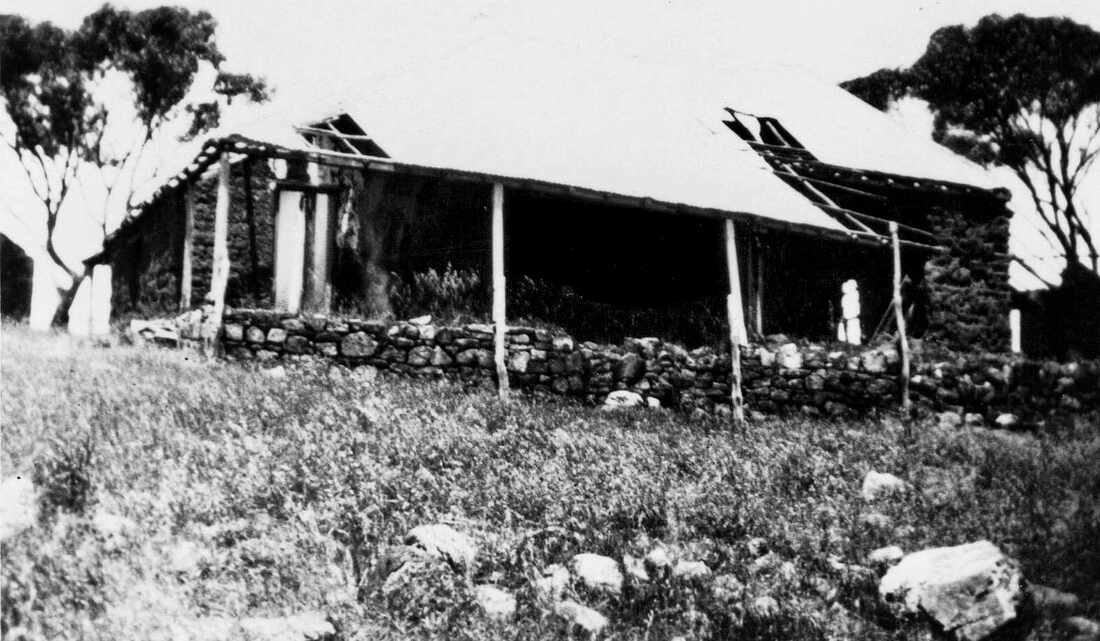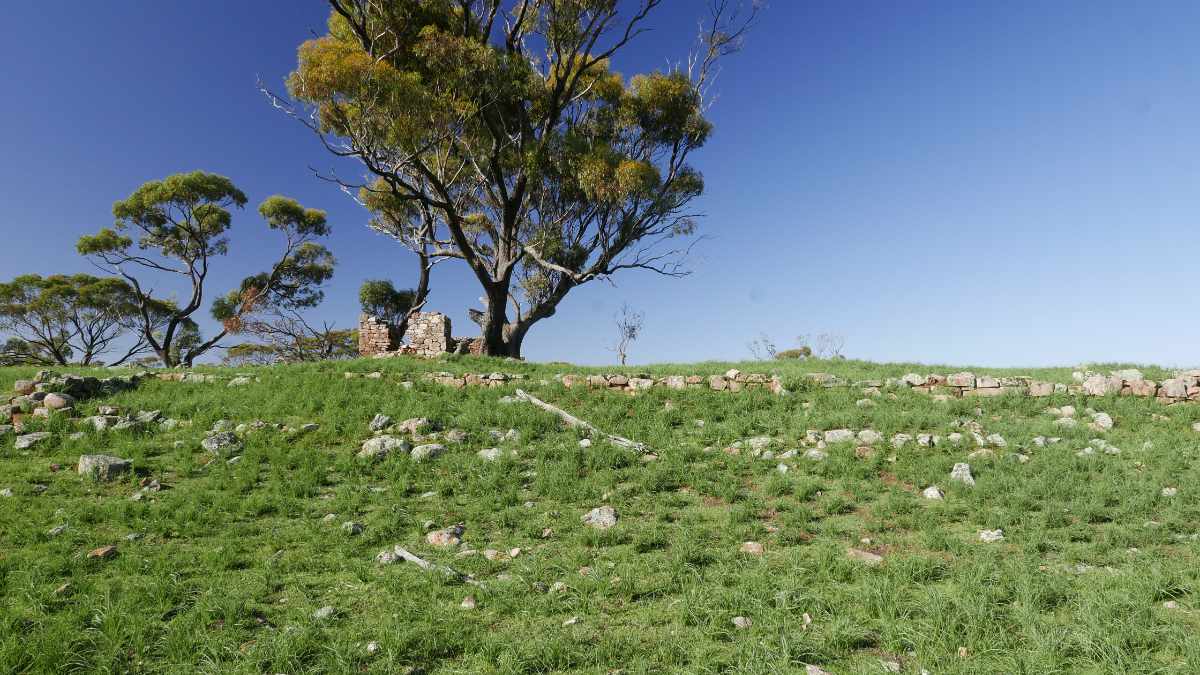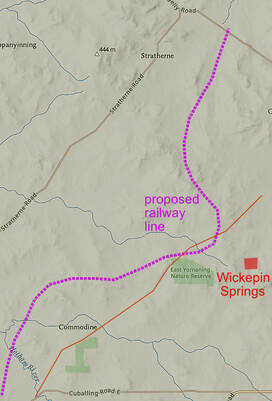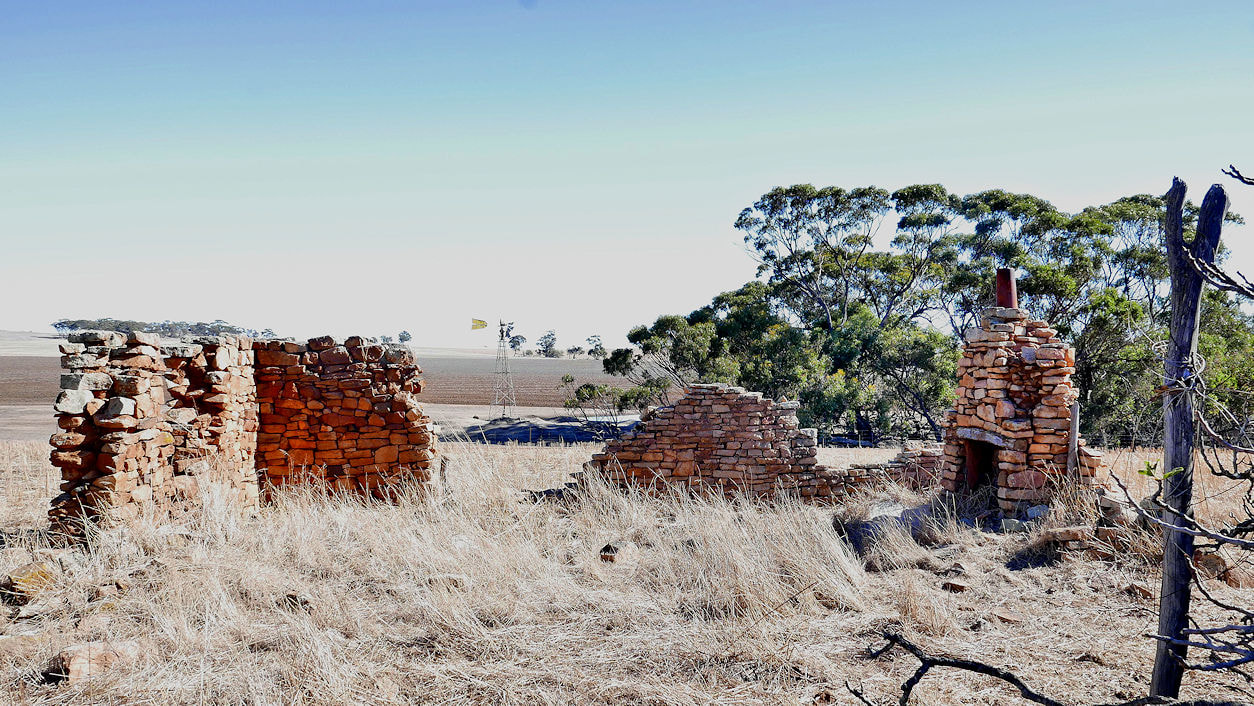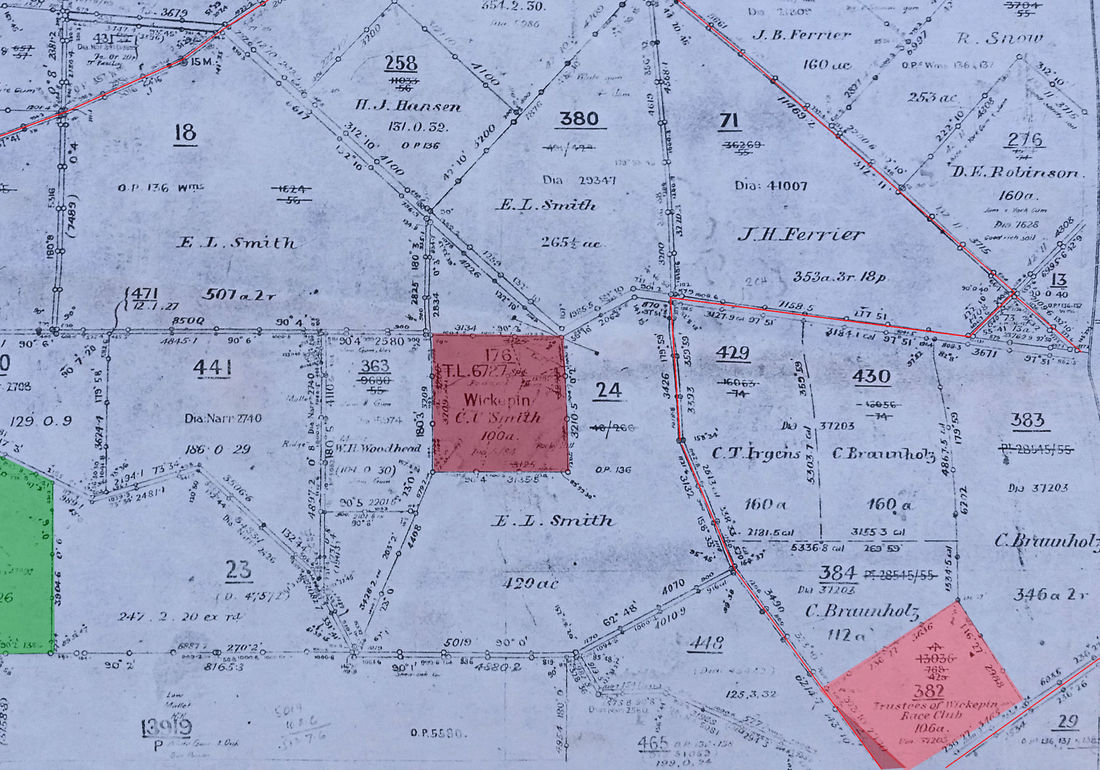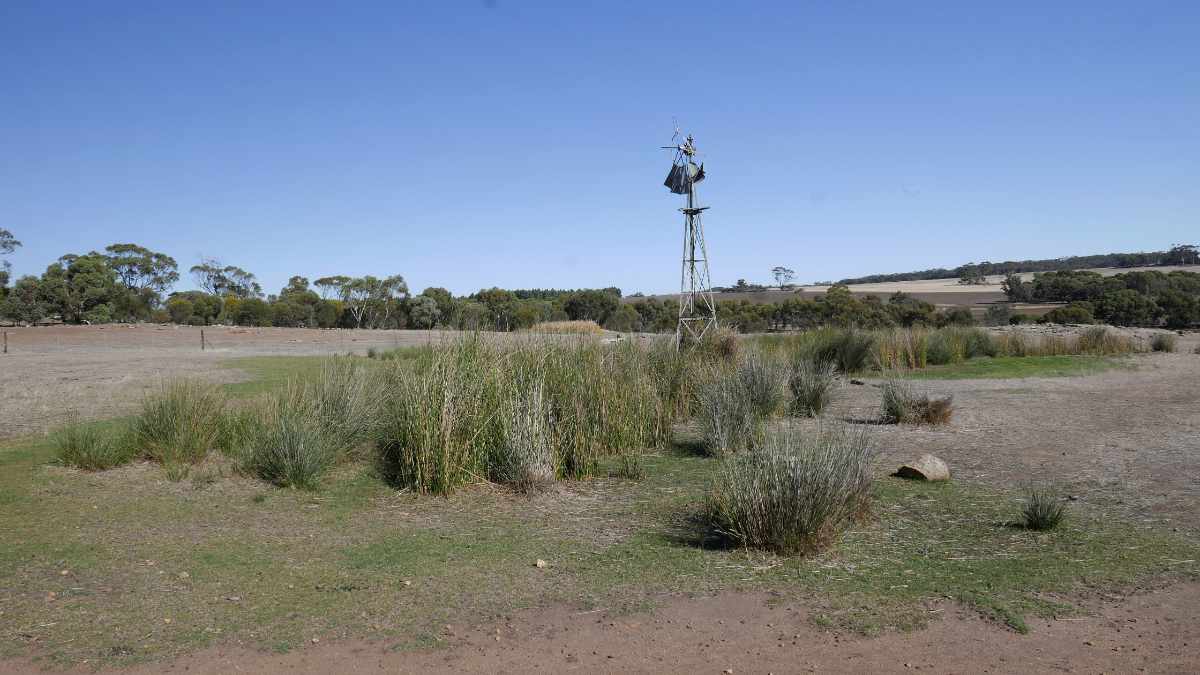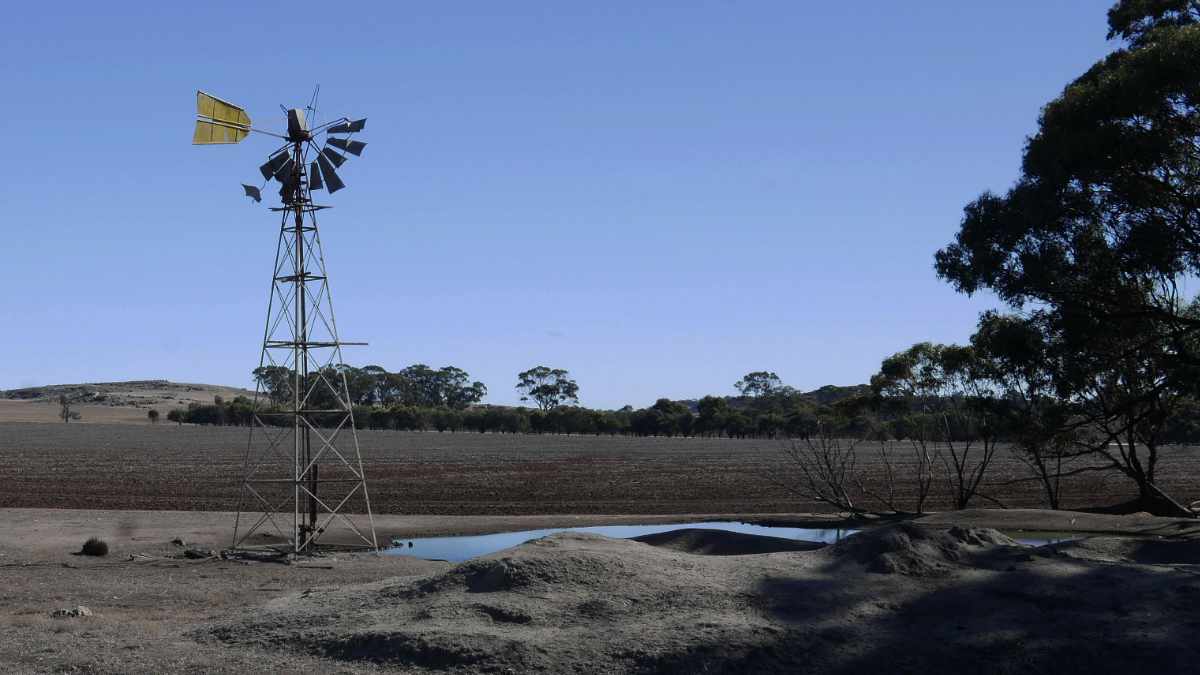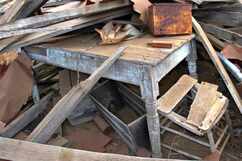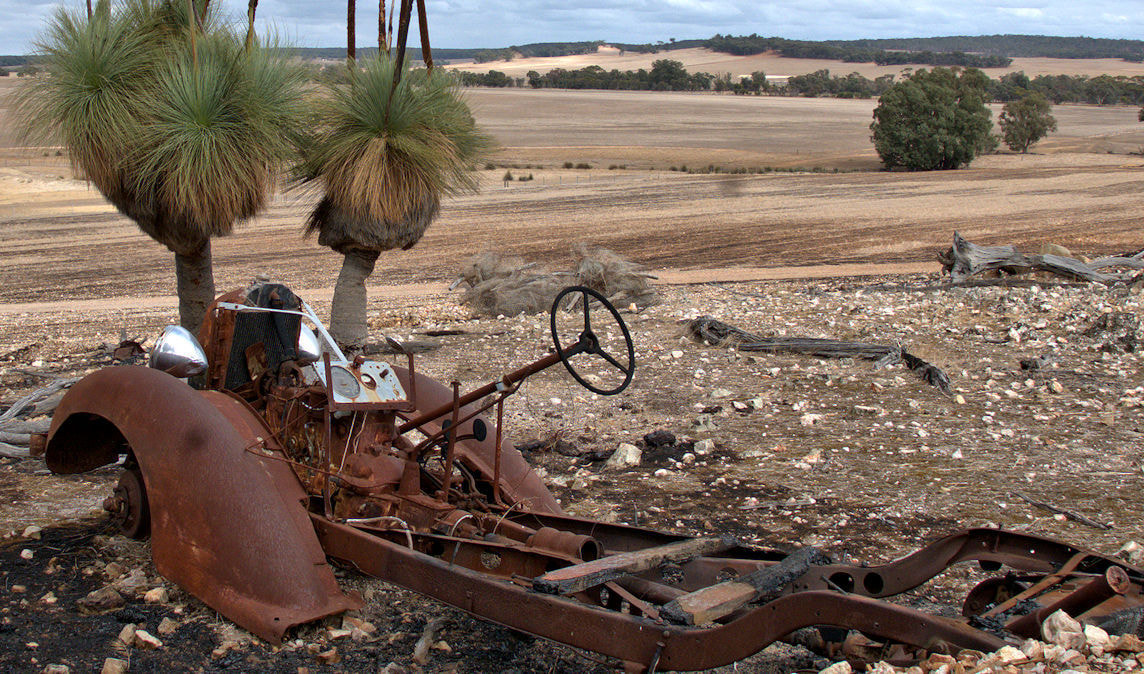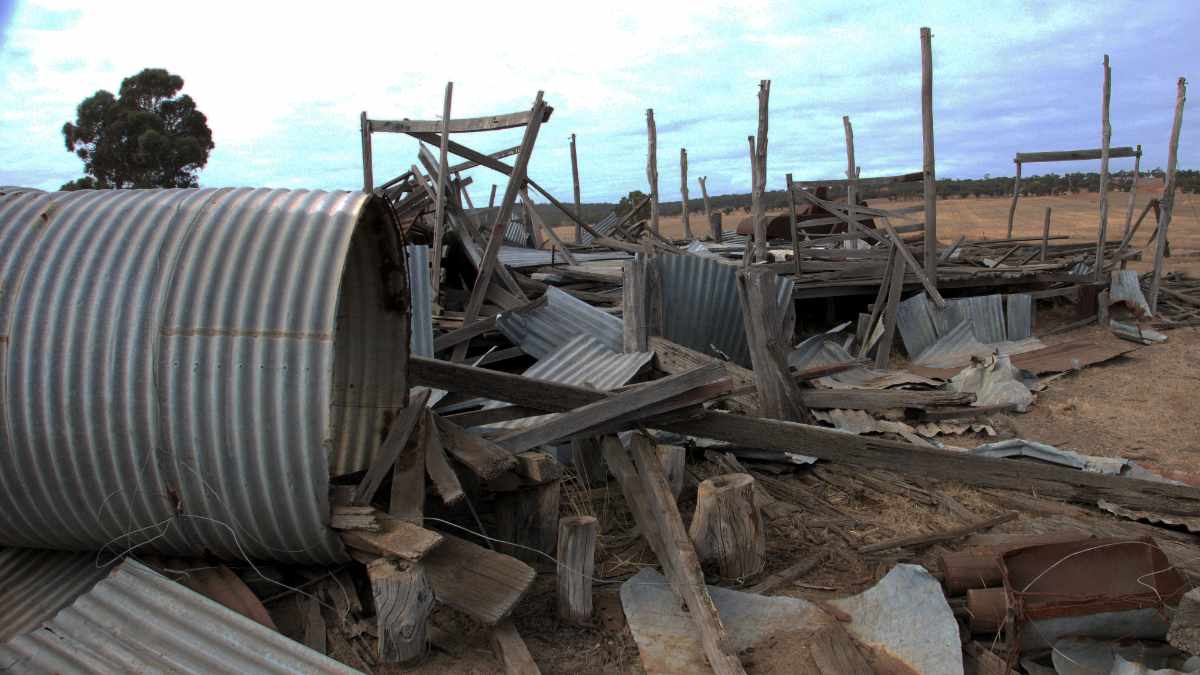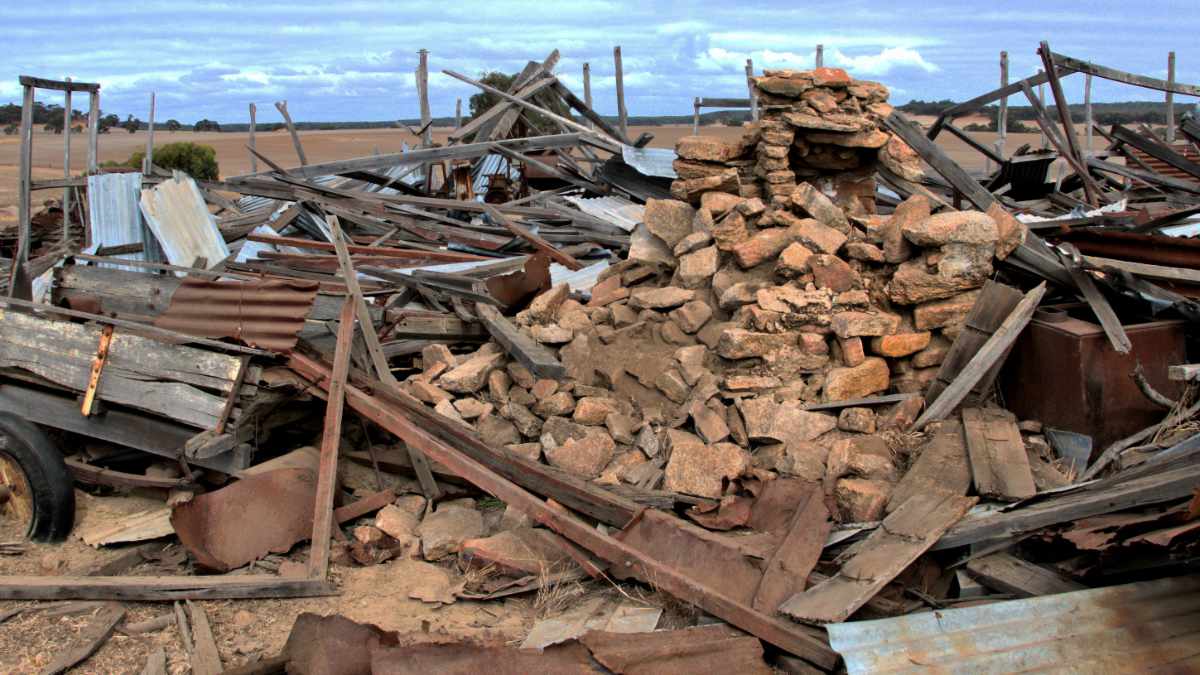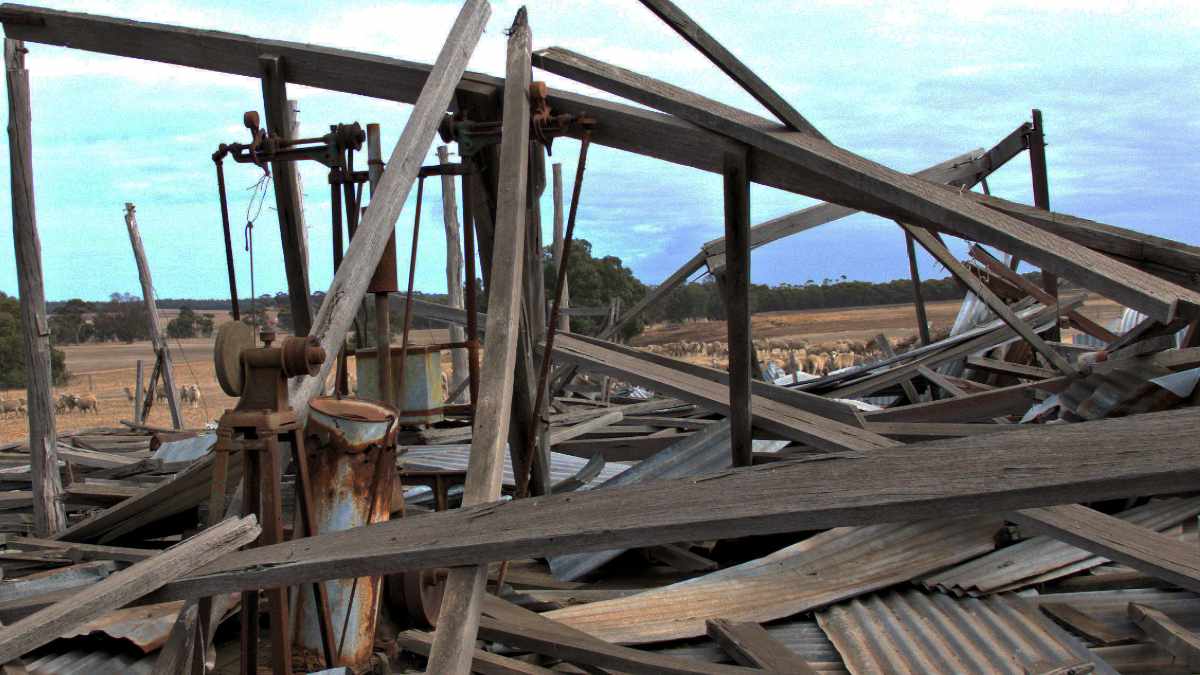This unassuming two room mud and granite cottage has a fascinating but sad history. The present owners call it “Lovers Cottage” after a couple who never occupied it together.
Rabbit trapper Danny Townsend lived in the cottage during the Second World War, but apart from that it remained as a memento of a remarkable story. It is on private land and is not available for viewing.
To their credit, the existing owners have reroofed the cottage so that it will still be standing for another 100 years.
Rabbit trapper Danny Townsend lived in the cottage during the Second World War, but apart from that it remained as a memento of a remarkable story. It is on private land and is not available for viewing.
To their credit, the existing owners have reroofed the cottage so that it will still be standing for another 100 years.
|
Alfie Knowles was born in Southampton England in 1895. He bought Location 5420 from farmer John Nowke. Alfie was a fine figure of a man (5 foot 4 inches tall just like me!).
He enlisted in the Australian army in 1916, and was awarded the Military Medal, and Medaille D’Honneur in France in 1918. Here is an extract from his army records in the National Archives of Australia. Alfie was hospitalised in England with Trench Foot and met a lady who became his fiancé. He was discharged on 4th November 1919, returned to the farm and built the cottage. Tragically he was kicked by a horse on 7th April 1921, and died from a ruptured spleen |
28th Battalion AIF 8391 Pte William Robinson 4465 Pte A. Knowles During the attack East of Villiers Brettonneux near Amiens, on the morning of 8th August 1918, an enemy strongpoint was encountered, and the advance was held up. These two men on their own initiative, rushed forward with their Lewis Gun, opened fire and inflicted heavy casualties, causing the garrison of 20 to surrender. Their action enabled the advance to continue. |
| His fiancé was on a ship from England to Australia, at this time and did not learn of his death until she arrived at Cuballing. The poor woman stayed in Cuballing for some months before returning home. The government eventually sent Alfie’s medals to his mother in the Isle of Wight in 1924. Many years later a letter was sent to the Postmaster: Cuballing Western Australia by a person who found his military medal on an Isle of Wight beach. The family portrait was taken in England of the Sloper family into which one of Alfie's sisters (bottom right) married. Top right is another sister then Alfie. |
For a visual exploration of the cottage ctrl+ click https://photos.app.goo.gl/FkFWS49upWTKX2Zg2

